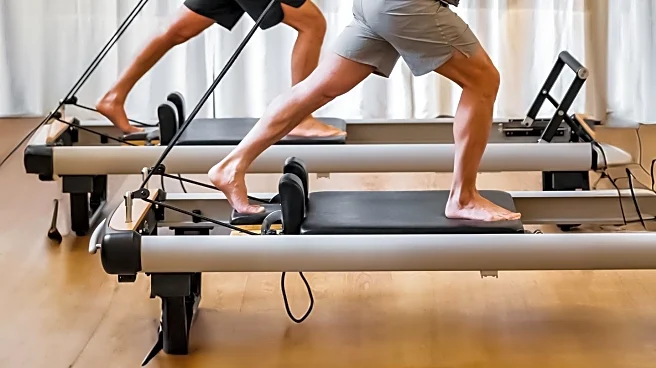What is the story about?
What's Happening?
Balance training is gaining popularity in the fitness community as a crucial component of overall wellness. This trend is driven by studies indicating that individuals who struggle to maintain balance, such as standing on one foot for 10 seconds, face increased risks of falls, cognitive decline, and even mortality. Fitness experts are incorporating balance exercises into routines, emphasizing core strength and stability. Activities like yoga, Pilates, and HIIT are being adapted to focus on balance, with trainers using exercises such as split lunges, bicycle crunches, and dead bugs to improve core strength and balance. The growing interest in balance training is partly attributed to its potential benefits in treating conditions like ADHD and dyslexia, as well as its role in preventing age-related decline.
Why It's Important?
The emphasis on balance training reflects a broader shift in the fitness industry towards holistic health practices. As the population ages, maintaining balance becomes increasingly important to prevent falls and associated injuries, which can lead to significant healthcare costs and loss of independence. Additionally, balance training may offer cognitive benefits, potentially improving focus and mental acuity. This trend also highlights a cultural shift towards proactive health management, where individuals seek to enhance their physical and mental well-being through targeted exercises. The integration of balance training into fitness routines could lead to improved quality of life and longevity for many individuals.
What's Next?
As balance training continues to gain traction, fitness centers and trainers may increasingly incorporate these exercises into standard workout regimens. There is potential for further research into the specific benefits of balance training, particularly its impact on cognitive health and aging. Fitness apps and online platforms might also begin offering specialized balance training programs, making these exercises more accessible to a wider audience. Additionally, public health campaigns could promote balance training as a preventive measure against age-related decline, encouraging individuals to adopt these practices early in life.
Beyond the Headlines
The rise of balance training may also influence other areas of health and wellness, such as rehabilitation and physical therapy. As balance exercises become more mainstream, they could be integrated into treatment plans for patients recovering from injuries or surgeries. Furthermore, the focus on balance might inspire innovations in fitness equipment and technology, leading to the development of new tools designed to enhance stability and coordination. This trend could also spark discussions about the importance of balance in everyday activities, encouraging people to incorporate simple balance exercises into their daily routines.
AI Generated Content
Do you find this article useful?














